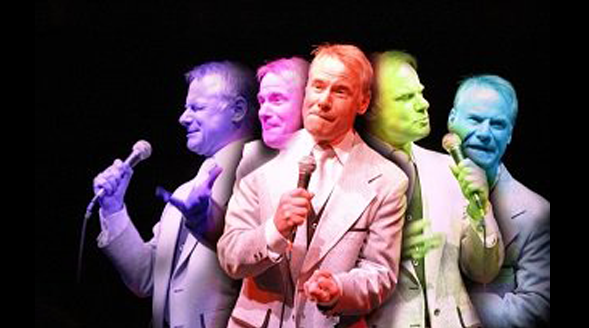By: Acting Center Student, Jim Meskimen. Star of last season’s America’s Got Talent.
I have been interested in voice acting, narration, voiceover and the like since I was a little guy. I was exposed to wonderful recordings as a child, maybe even as a baby, and I learned early on how expressive and delightful the voice can be, in storytelling, poetry recitation, and comedy.
Having been raised by two actor parents who loved to read aloud was a definite advantage.
Now, after thirty years in show business doing almost everything one can do with voice, including singing, radio, audiobook directing, animation, looping, videogames, apps, narration, sound effects, ring tones, impressions, animal noises, even GPS system voice recordings, I find that I have some definite opinions about voice over acting, and some artistic tips for people starting out.
One thing that I think is both vital to understand and practice and also rather easy to explain is the following, which applies to any vocal performance where one is working from a script.
The script should never drive the performance; the actor is in charge of pace, emotion, timing and everything else.
What do I mean?
I think this is best illustrated by listening to a child read anything, or better yet, a digitized voice. Both are mechanical to the degree that they do not exercise judgement about what they are reading. One word follows the other in more or less the same pace, the sentences follow without pause, or with identical pauses, just as if a little conveyor belt were feeding the words out.
Obviously, this is not good technique if you want the audience to feel anything or follow the thread of your discourse, whether you are reading Chaucer or explaining how to boost ROI by using a new website dashboard. It is the ultimate of dissatisfying storytelling; nobody would listen to it.
Strangely, I have found many examples of computer generated narration of audiobooks on YouTube; it is inconceivable to me that anyone other than another laptop would ever listen to such a recording for more than a minute. It’s torture!
We can easily see by this example what the wrong thing to do is, and that is to just read the words with the same weight of importance and emphasis, and let the symbols themselves do all the work.
When we stop letting the WORDS be in charge, and take the necessary micro-seconds to form an opinion about them, and DECIDE how to deliver them in order to convey the scene, not becoming a slave to the assembly line on the page, then the performance gets more under our control and we really begin to tell the story.
Observe some people on the street or at a party talking about something that interests them. They don’t ever sound mechanical, or like they have to say things at a certain set rate. They pause, they consider, they stop to see if YOU are still following them, and if you agree.
The most interesting speakers take time to let the listener digest what was said, then speed up or get loud or color the words in a million different little ways to get the point across…. because that IS the point– to GET A POINT ACROSS. Not to “Talk single file” at a proper rate, (that’s what they do on newsradio– everything is of equal value, the train wreck that killed hundreds and the latest appearance of a Kardashian at a mall opening) but to COMMUNICATE SOMETHING.
So, an exercise I recommend is to read a page of something aloud, just read it through, without paying particular attention to the rate of speed or the delivery, then read it AGAIN several times and exercise your own control over the time you take saying the words, and especially the pauses in between sentences and phrases.
See if you can take control. If you feel in any way “Tugged along” by a section, then break up the rhythm on purpose, whether or not it makes sense to. Do whatever you can to break out from the domination of the lines of text that seem to demand you not stop in your delivery of the next syllable, and the next, and the next…
The shared font size of letters seem sometimes to demand that all words are more or less equal, or should be stated similarly; for example this quote from Oliver Wendall Holmes:
“The sound of a kiss is not so loud as that of a cannon, but its echo lasts a great deal longer.”
Now how would you read it if it was printed like this:
The sound of a kiss is not so loud as that of a cannon,
but its echo lasts a great deal longer.
We don’t print things that way, because we generally are in a hurry to give and take information, but when we are performing text, be it for radio commercials, live poetry readings, instructions on a webpage, or as a character in any story, we can add a lot by simply exercising our ability to differentiate the relative value of words and sentences. That’s what human beings do. Machines can’t.
Be less and less a machine in your approach to text, and your work will improve instantly. Give it a try.
Hope that helps.
